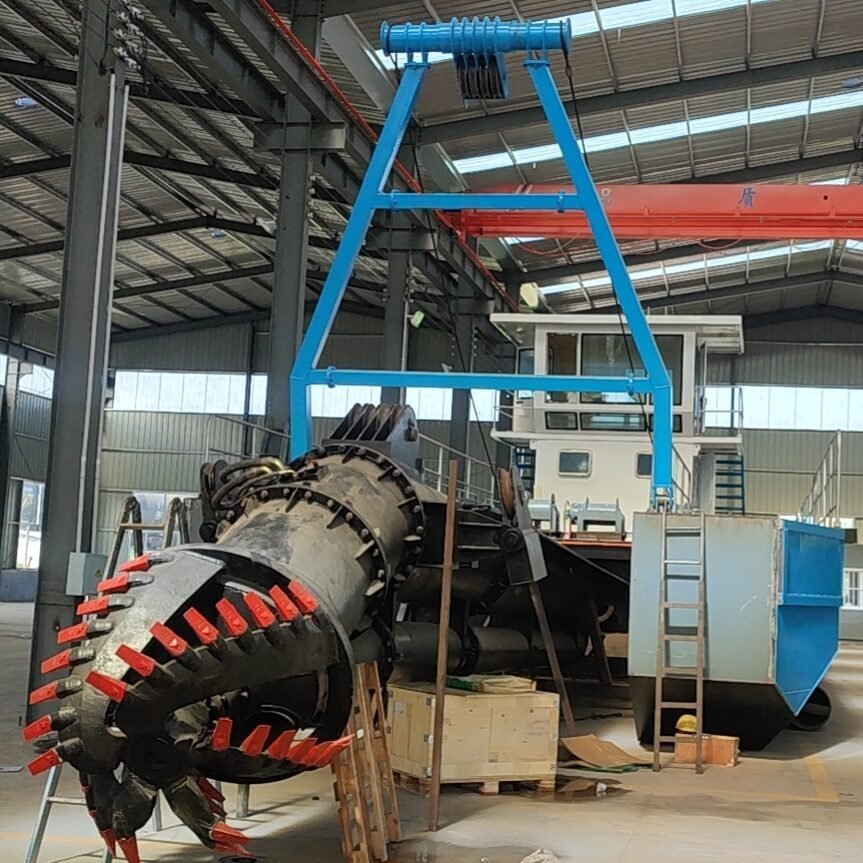
Keywords: Dredging Technology, Evolution of Dredgers
Introduction to Dredging Technology
Dredging has played a crucial role in construction, mining, and environmental management for centuries. The process involves removing sediment, debris, and other materials from bodies of water to maintain navigation channels, reclaim land, or extract resources. Over time, dredging technology has evolved from simple manual methods to highly advanced modern dredgers. This article will explore the history and evolution of dredging technology, highlighting key developments and the benefits they bring to today’s dredging operations.
Early Manual Dredging Techniques
Before the advent of modern machinery, dredging was a labor-intensive process. Workers used basic tools, such as shovels, buckets, and winches, to manually remove sediment from water bodies. These early methods were slow, inefficient, and limited in scope. Dredging operations were typically small-scale and required large teams of laborers to complete even modest projects.
- Shovel and Bucket Dredging: In ancient times, workers would wade into shallow waters to scoop up sediment with shovels or buckets. They would then carry the material to shore, where it was used for land reclamation or disposed of.
- Winch and Crane Systems: By the Middle Ages, simple winch and crane systems were developed to lift sediment from deeper waters. These systems used ropes and pulleys to haul buckets of material from the water to the surface.
The Introduction of Mechanical Dredgers
The industrial revolution brought significant advancements in dredging technology. The introduction of steam power and mechanical dredgers transformed the industry, allowing for more efficient and large-scale operations.
- Steam-Powered Dredgers: In the 19th century, steam-powered dredgers revolutionized the industry. These machines used steam engines to power pumps, winches, and other mechanical components, greatly increasing the efficiency and capacity of dredging operations. Steam-powered dredgers could operate in deeper waters and remove larger quantities of sediment than manual methods.
- Bucket Dredgers: The bucket dredger, one of the earliest mechanical dredgers, used a continuous chain of buckets to scoop up sediment from the seabed. The material was then transported to a barge or shore for disposal. Bucket dredgers were highly effective for deepwater dredging and large-scale projects.
Modern Dredging Technology
Today, dredging technology has advanced to include a wide range of specialized dredgers designed for specific tasks and environments. These modern dredgers are equipped with advanced features that enhance efficiency, accuracy, and environmental protection.
- Cutter Suction Dredgers (CSDs): Cutter suction dredgers are among the most versatile and widely used dredgers in modern operations. They feature a rotating cutter head that breaks up sediment before it is sucked up by a powerful pump. CSDs are ideal for dredging hard or compacted materials and can operate in a variety of water depths.
- Trailing Suction Hopper Dredgers (TSHDs): TSHDs are designed for large-scale dredging projects, such as deepening navigation channels or land reclamation. These dredgers use suction pipes to collect sediment, which is then stored in onboard hoppers. Once the hoppers are full, the material can be transported to a disposal site or used for land reclamation.
- Hydraulic Dredgers: Hydraulic dredgers use high-pressure water jets to break up and remove sediment. These dredgers are particularly effective in shallow waters and for removing fine materials, such as sand and silt.
The Impact of Digital Technology on Dredging
Digital technology has further transformed the dredging industry, enabling more precise and efficient operations. Modern dredgers are equipped with advanced sensors, GPS systems, and computer-controlled components that allow operators to monitor and adjust operations in real-time.
- GPS and GIS Integration: GPS and Geographic Information Systems (GIS) are now standard features on modern dredgers. These technologies allow operators to accurately position the dredger, monitor progress, and ensure that dredging is carried out according to plan. This level of precision reduces the risk of over-dredging and minimizes environmental impact.
- Automated Dredging Systems: Some modern dredgers are equipped with automated systems that control the dredging process with minimal human intervention. These systems use data from sensors and GPS to adjust dredging parameters in real-time, optimizing efficiency and ensuring consistent results.
Conclusion: The Future of Dredging Technology
The evolution of dredging technology has come a long way from the days of manual labor and simple tools. Today, modern dredgers are powerful, efficient, and equipped with advanced features that allow for large-scale and environmentally responsible dredging operations. As technology continues to advance, the future of dredging promises even greater efficiency, precision, and sustainability. Operators who embrace these innovations will be well-positioned to tackle the challenges and opportunities of the future.

No responses yet